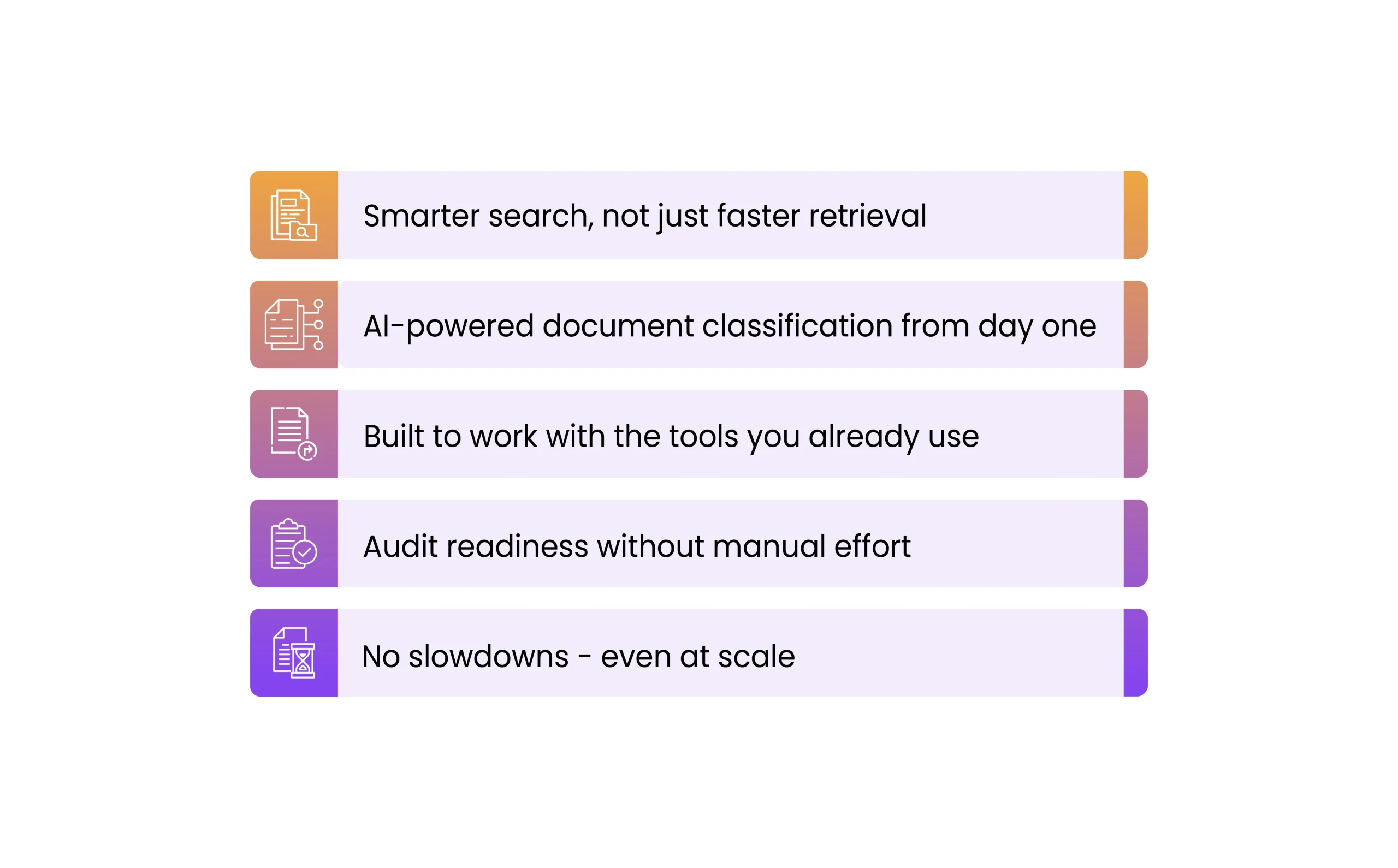Introduction
Everyone has experienced the frustration of misplacing an important document—whether it’s a medical bill, an old agreement, or a tax form. It exists somewhere, but finding it means digging through emails, desktop folders, or cloud drives labeled .
Now, imagine that same disorganization at scale. That’s how most legacy document systems still operate. They store files, but they don’t support how people actually work with them.
DMSVu was built to change that. With decades of evolution in document workflows across B2B SaaS, it’s clear: the industry has long needed a smarter, more intuitive solution.
Let’s look at five key improvements DMSVu brings over traditional systems.

1. Smarter search, not just faster retrieval
Traditional document systems rely heavily on exact filenames or rigid folder hierarchies, which often slow teams down, especially when managing high volumes of documents in mortgage or financial workflows.
DMSVu simplifies this with AI powered classification and intelligent indexing. Every document is automatically tagged and categorized using pre-trained models, making it easier to filter, sort, and retrieve based on document type, borrower name, or even relevant keywords within the content. There’s no need to remember specific file names or dig through multiple storage locations.
By turning every document into structured, searchable data, DMSVu reduces retrieval time and eliminates the manual effort of organizing files, freeing up your team to focus on decisions, not document hunts.
2. AI-powered document classification from day one
Legacy systems often depend on manual tagging or rigid templates to classify documents, which leaves room for errors, inconsistencies, and costly delays. DMSVu eliminates that friction right from the start.
It uses pre-trained AI models to automatically identify, label, and organize documents the moment they are uploaded, whether it’s a borrower’s income statements, appraisal reports, or closing disclosures. This automatic classification ensures documents are filed correctly, ready for review or downstream processing without any manual sorting.
This isn’t just about saving time. It’s about setting the foundation for audit readiness, compliance, and faster decision-making from the moment a document enters your system.
3. Built to work with the tools you already use
DMSVu integrates seamlessly with your existing loan origination and servicing platforms. Documents move smoothly from one stage to the next without teams having to switch tabs or manually re enter data. Whether it’s during underwriting or post-close, every file stays in sync with the system of record in real time.
This setup not only saves time but also reduces errors and ensures that everyone is always working with the right version, every step of the way.
4. Audit readiness without manual effort
In legacy systems, audit prep usually means digging through folders, rebuilding document trails, and double-checking every action taken. It’s time consuming and leaves room for missed steps.
DMSVu makes that part easier. It automatically records user actions, uploads, edits, and approvals with complete timestamps. You always know who handled each document and when. It also maintains version history and proactively flags missing or outdated files early on.
Instead of rushing to fix issues when audits approach, teams stay ready by default because the system quietly tracks everything in the background.
5. No slowdowns – even at scale
Legacy systems often struggle as document volumes grow. Search becomes sluggish, uploads fail, and batch processes can take hours.
DMSVu is built differently. For instance, in mortgage operations, it has demonstrated the ability to reduce document processing time by up to 70%. This efficiency ensures that, whether you are managing hundreds or thousands of documents, performance remains consistent.
For time-sensitive workflows like loan processing, that kind of reliability isn’t just
supportive, it’s essential.
Conclusion
Legacy systems weren’t designed for the speed, complexity, or volume that today’s document-heavy industries demand. DMSVu doesn’t just patch old problems, it rethinks how document processing should work from the ground up.
If your teams are spending more time managing files than using them, it may be time to take a closer look at what DMSVu can do differently.
Explore how DMSVu fits into your document ecosystem → docvu.ai






